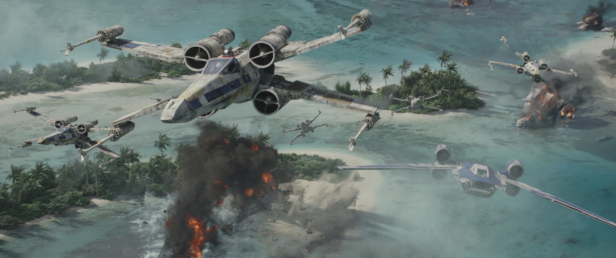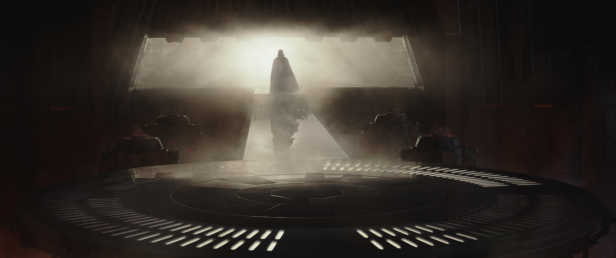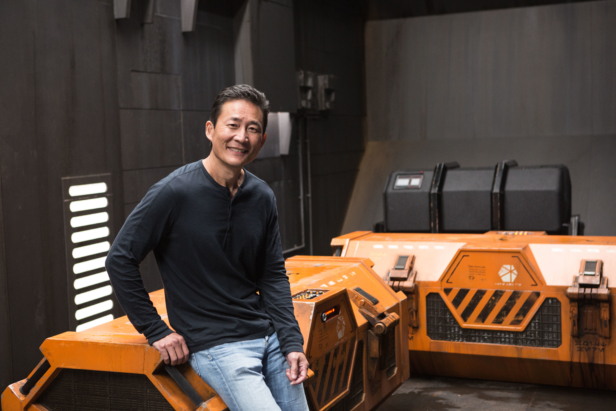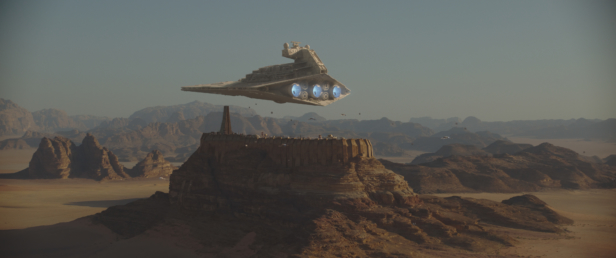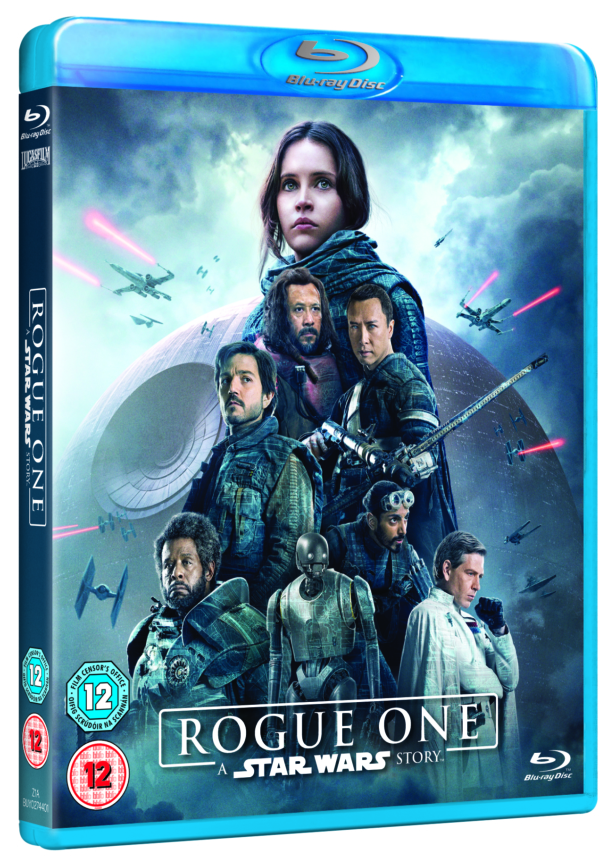Doug Chiang has a lot of experience with Star Wars. He worked as a design director on the prequel trilogy, concept artist on The Force Awakens and production designer on Rogue One. Still, it’s kind of reassuring to hear that the thrill of “Day one on a new Star Wars film” never goes away.
“No,” laughs Chiang, “because Star Wars is such an expansive universe, so each of the new films is actually really fun for me because it’s a new challenge. That’s partly because of the directors, they all bring their own point of view to it and for me that’s sort of the challenge of the film designer is to try and get inside the thought process of new directors while still building a world within the Star Wars universe.”
It must help when you’re working with someone like Gareth Edwards who’s such a huge fan
Yes, Gareth is amazing to work with. It’s funny because I didn’t realise how much of a fan he is. That made him really wonderful to work with because he was just as knowledgeable as myself, and so we could actually really talk geek levels of design, like “Why was that design used there, how did it fit and how can we update it for the new film?” So it’s all that layering that, when you’re talking with someone as well versed as Gareth, it’s actually a pleasure because we can build on those ideas and really expand on them.
The Star Wars universe is so rich and there are so many possibilities. Is that ever daunting from a design point of view?
Yeah, that’s one of the challenges. The Star Wars universe is so vast it could be daunting, but what always helps us is to frame it with the screenplay, so we know narratively where the worlds are and what the restrictions of the sets are. But even with having that as a framework, I do like to push the boundaries a little bit, and that’s part of the fun part of early exploration of production designing these films.
I think of it as an A and B process, the first part is really blowing it out there in terms of creating aspirational images. Creating imagery that we want to see in a Star Wars film while framing it in the story. And then the B part of it is, once we have a script, is take it and really address the details of the design so that they can be focused with the story, making sure that the sets narratively and visually can work within the framework of a movie.
So those processes kind of go back and forth, but I always like to start big because once the actual production of production design starts to happen, ultimately the real world limitations of time and resources and budget tend to constrict the vision. If you don’t start big the vision’s going to always get smaller from there! But even if we try to expand it as much as possible, it’s always good to have boundaries and in many ways we try to create those boundaries ourselves, because if we’re given a complete open world environment to design, it can get very daunting and you can get lost very quickly.
Having worked on this, the prequels and The Force Awakens, you’ve been all over the Star Wars timeline! What was the biggest challenge with Rogue One in terms of where it sits in the chronology?
What remained key to that was the seven years I worked with George while I was designing the prequels. Those seven years were actually critical for me because I learned the foundation of what makes a Star Wars design from George.
At that time what we were doing was we were actually creating the design history of the Star Wars universe and that became critical for us because Rogue One, in my view, bridges the prequel aesthetics with the classic aesthetics, and the timeline actually makes sense. On my first days working on the Ranch, George threw me for a loop when he said that we weren’t going to design classic designs, we were going to go back to an earlier era and define how those designs came about. By doing that we were establishing the foundation.
So I look at Episodes I, II and III as grounded in the 20s and 30s, more romantic designs, handcrafted art, and Episodes IV, V, and VI are more in the mass production, assembly lines part in terms of the designs. And Rogue One was going to be right in the middle of that. Closer to Episode IV, but it gave me the foundation of actually bringing elements of Episode III into Rogue One while anchoring it heavily in Episode I. It was really important to know that design history because it really gave a real world foundation, and for me I think that’s very important for a film series like Star Wars because it grounds it in a reality that we can relate to.
It does feel like everyone talks about the Star Wars universe as being this pristine, fantastical thing, but so many of the designs look functional, like you can see how they work.
It’s one of the things that is sometimes forgotten or under-appreciated, is that Star Wars is heavily grounded in reality and I think that’s the key. George found the perfect balance, and what he told me is that basically you’re taking reality and you’re just twisting it by 10, 15, maybe 20% to make it fresh. But by doing that what we’re doing is we’re leveraging off thousands of years of human culture in terms of architecture and environments.
The trick is really to bring all that up and put it into a new context by adding something new. The best example I can think of is Luke’s homestead in Tunisia. That was based on a real hotel, 80, 85% of it was the real hotel and they added 15% of new in here. Things like moisture evaporators, control panels, steel doors. And what happens when you do that is your finished design brings with it all that history of the original source, and it makes it feel grounded in a reality that you can kind of relate to. You may not understand it all at first but I think as an audience member you can feel it, that it feels very authentic and I think that’s why Star Wars design has a timeless quality.
Do you remember your first experience of seeing Star Wars?
Oh, I do, I was 15 and I saw it in the cinema. I grew up in Michigan and I really went in cold. I knew about it because a year previous I had picked up the novelisation for it, so I kind of knew about it and that kind of piqued my interest, but I didn’t know what to expect, and I remember sitting there in the movie theatre when the Star Destroyer came overhead, it just kept wow-ing me left and right. I kind of knew the story because I’d read the novel, but to actually see it and experience it, hearing all the sound in the cinema was just a mind-altering, career-altering experience for me and from that moment I knew I wanted to get into film design somehow but I had no idea how!
Rogue One: A Star Wars Story is out now on Blu-ray, DVD and Digital Download.
